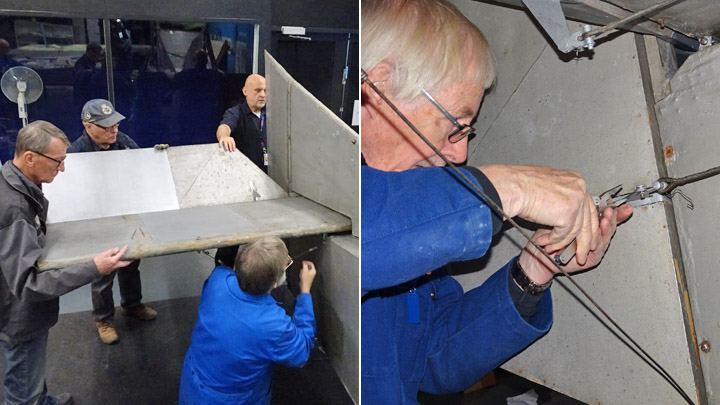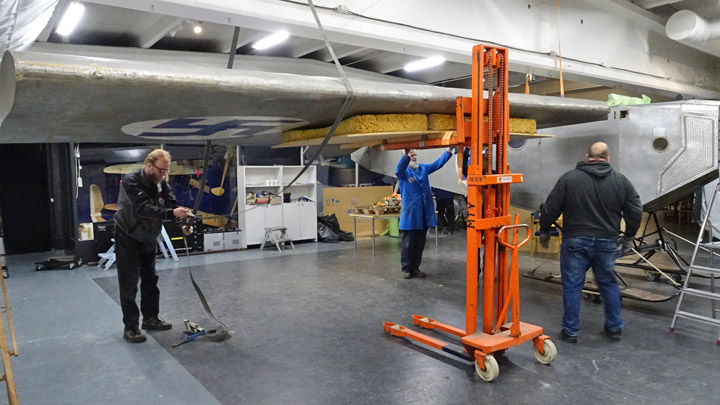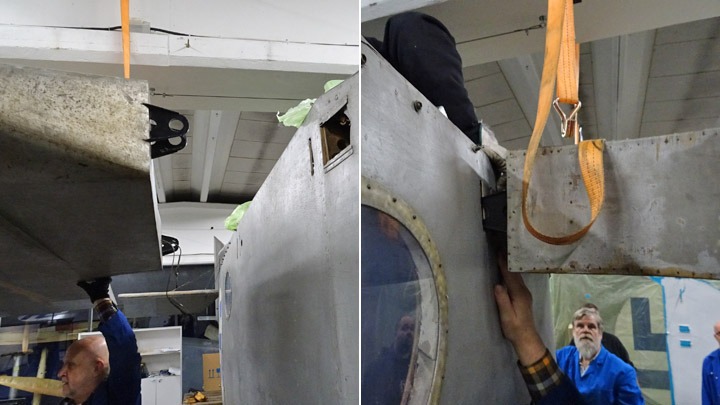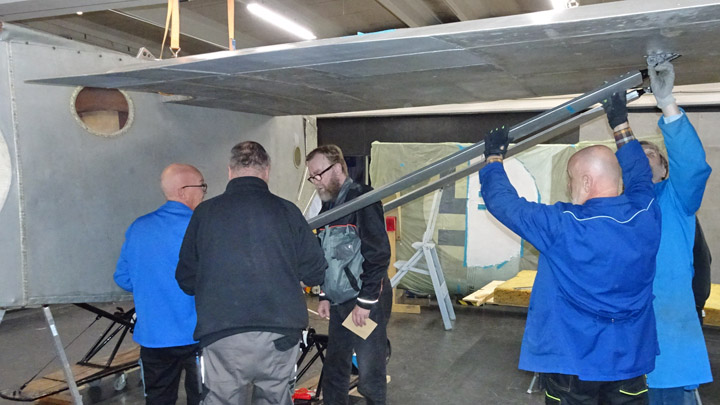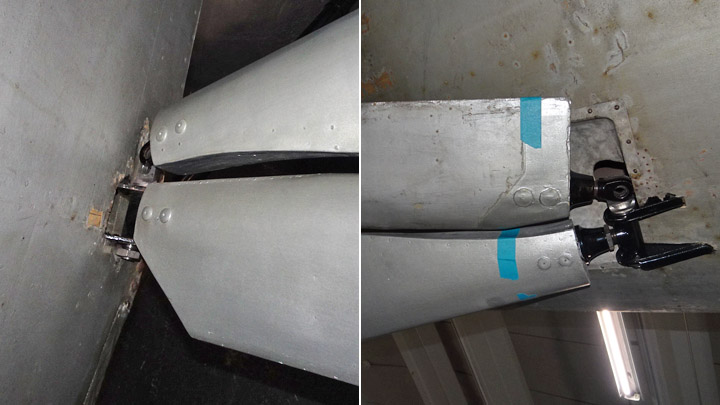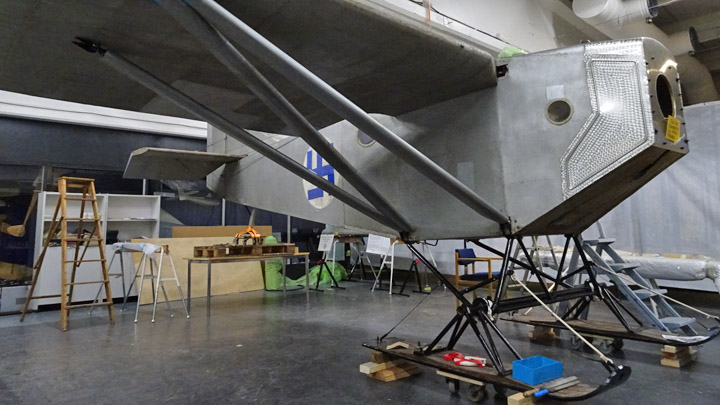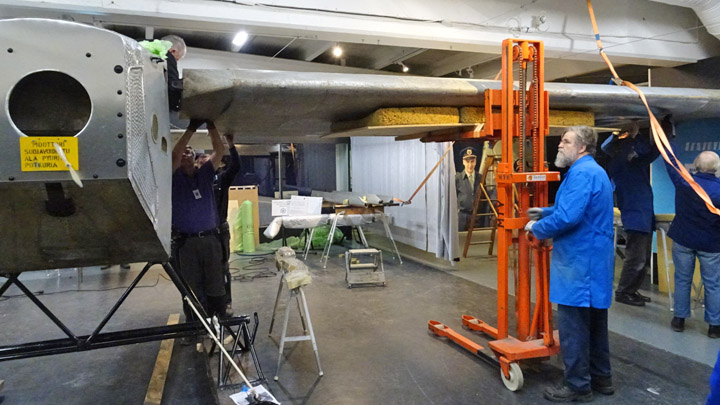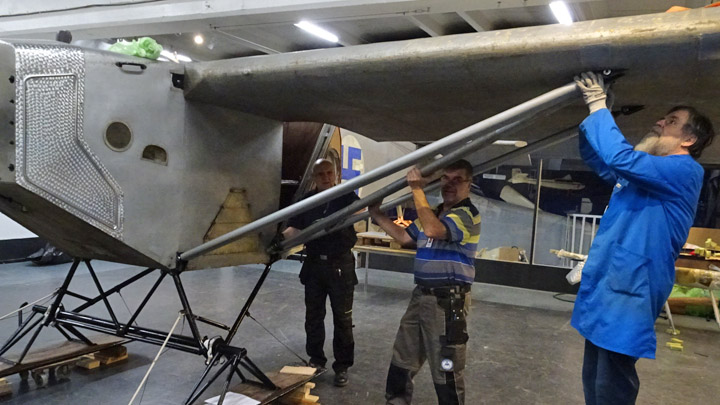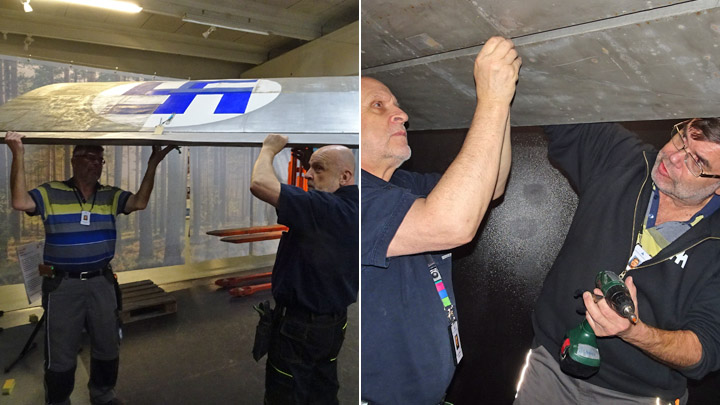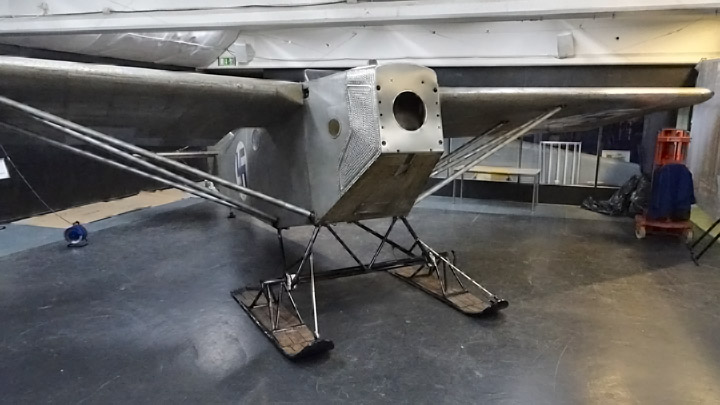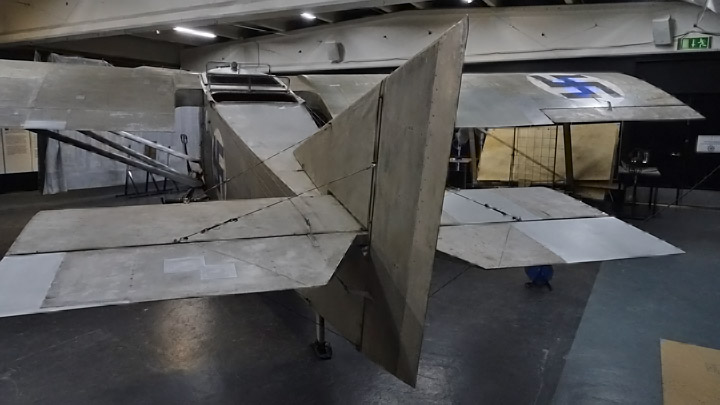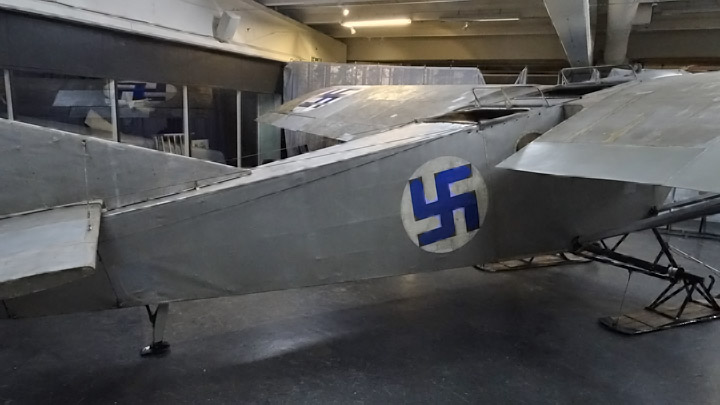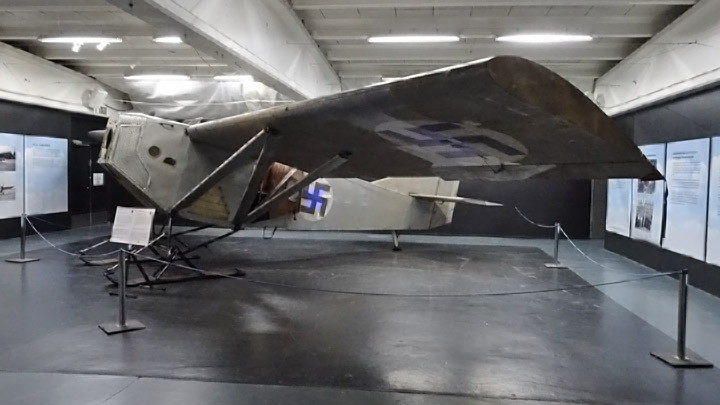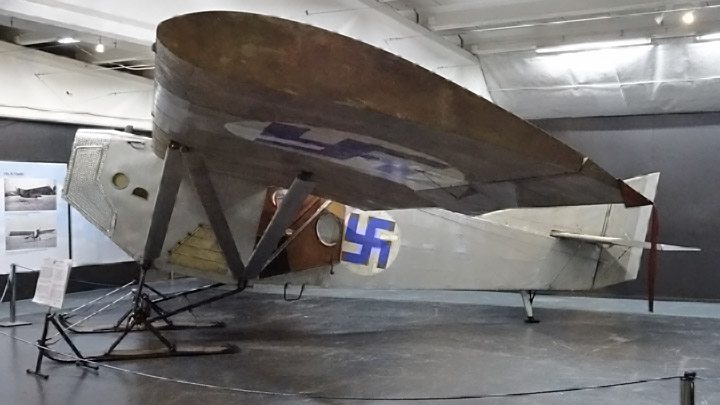Kurki restoration work has been completed and plane is on display!Torstai 27.12.2018 - Member of Tuesday Club The Tuesday Club team worked hard before Christmas to finish the I.V.L. K.1 Kurki restoration work so that the plane could be placed on display at the Finnish Aviation Museum before Christmas.
The fuselage of Kurki was in the Middle hall of the Aviation Museum, where the other parts were assembled as soon as the painting work of the new plywood surfaces on the tail parts and wings had been completed. The first parts to be assembled on the fuselage were the elevator and the horizontal stabilizer. The assembly work went well, and the control cables could be installed.
Kurki’s large wings had been partly covered with new plywood and the painting work on the new areas on the right / starboard wing were completed first. The assembly work of the starboard wing could be started in the beginning of December. The wing was lifted to the correct assembly height using a stacker. The lifting was secured with a cargo strap around the wing, attached on a beam in the ceiling. The cargo strap also prevented the Kurki from falling over when it had only the starboard wing assembled.
The lifting of the wing went well and the fastening elements on the root of the wing were pushed into the holes in the fuselage. The wing was easily locked in place. The assembly of the three wing struts was far more difficult. Four of the six wing struts had been made by the Tuesday Club team, because only two original parts were available. The team had no information on the actual shape of the fasteners at the ends of those struts and had improvised. This was why the strut fasteners had to be slightly modified during the assembly work to make them fit on the fasteners on the fuselage and on the wing. Finally, the fasteners slid into position and could be locked.
The painting of the port wing had been completed and the assembly work could be started on December 11th. The assembly procedure followed the procedure with the other wing, everything went smoothly until the wing struts were installed. Again, the fasteners on the wing struts had to be modified to make them fit. The wing was fastened in place and the wing struts fastened. Now both wings had been assembled and the securing cargo line could be removed. The ailerons were assembled on the wings and finally Kurki was a real airplane, for the first time in 91 years. When the test flights were finished in the autumn in 1927 the Kurki was dismantled and the parts were stored.
The Kurki can’t be described as smooth and beautiful! No wonder that it was nicknamed at the time as “Järvinen’s box”, according to its designer Asser Järvinen, the manager of the Airplane Factory. However, the Kurki is impressive with its huge wings. The Tuesday Club wish they had the proper Siemens-Halske 12 engine for the Kurki so that the plane would look like a real flying airplane. Unfortunately, there is not a single SH 12 engine available in Finland for the Kurki.
The remaining task was to turn Kurki around in the Middle hall of the museum, into its final display position. Maneuvering the plane was fairly easy, the Kurki rested on its skis and tail wheel on pallets with wheels. The problem was that the final assembly work had taken place under the main ceiling beam in the middle of the hall and now the wingtips of the Kurki nearly touched the walls of the hall. The plane was inched into a diagonal position in the hall, but that was a close call: there was a marginal of 5 cm between the wingtip and the wall.
When the Tuesday Club was working on the assembly, the Aviation Museum Society had been making preparations for the Kurki exhibition, including information posters. The posters describe the history of Kurki and also the restoration work at the Tuesday Club. There is also information about the design and construction of Kurki and about the history of the Air Force Airplane Factory, which operated in the Viapori sea fortress in the 1920’s.
The Kurki exhibition was opened on December 18th. The plane is on display in the Middle hall of the Finnish Aviation Museum, at least until the end of January but probably longer. The exhibition is definitely worth a visit: Kurki is one of the most extraordinary products of the Air Force Airplane Factory. |
|
Avainsanat: aviation history, restoring, old aircraft, I.V.L. K.1 Kurki |


